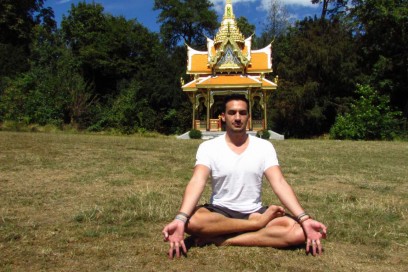Ashtanga Yoga and history
Are you curios to dig deeper into Ashtanga Yoga and history? Learn what you need to know
Ashtanga in Sanskrit means 8 limbs. This 8 limbed system has been outlined by Patanjali in the Yoga Sutra in 300 B.C. It is indeed of old origin. The Ashtanga practice consists in applying 8 limbs, which are: the Asanas (physical postures) along with Yama (ethical observations), Niyamas (self-observation), Pranayama (regulation of the breath), Pratyahara (sens withdrawal), Dharana (concentration), Dhyana (meditation) and finally Samadhi (absorption into the universal).
The different stages mentioned can take a life time to achieve and need a consistent practice!
Later on, one of Krisnamacharya’s students, K. Pattabhi Jois, took the instruction over as the basis of his practice and teaching. He developed the Ashtanga Vinyasa Yoga which focuses on Asana (posture), Pranayama (breath), and Vinyasa. Vinyasa is the link of posture with 1 breath for 1 movement. In 1948, Jois established the Ashtanga Yoga Research Institute (now known as the Shri K Pattabhi Jois Ashtanga Yoga Institute) in Mysore, India.
The traditional Ashtanga system consists of six series of postures which is always taught in a specific sequential order. First comes the primary series, (the one we practice together) then intermediate series and advanced series (A, B, C and D). Ashtanga Vinyasa yoga grew in popularity with time in the western part of the world and is now practiced by thousands of students around the world.
What is important in Ashtanga Yoga?
- Breathing
During our Yoga Teacher Training in Thailand, our teachers kept telling us to “breathe” which is the most important thing. Indeed, without the breath, it is not really yoga. The idea is to make an union with the body, mind and spirit. Also, the breath will lead the student deeper into the poses. The Ocean breath or Ujjayi breath is usually used during the whole practice.
- Drishti (focused gaze)
The focus of the eyes stay in a specific direction in order to stay concentrated and avoid our mind to wander. When confronted with our own practice, we have to face distractions or discomforts. The physical practice aims to bring us back to that focused state, rather than passively listening to a teacher or watching others.
And what about the benefits ?
Ashtanga Yoga or any kind of yoga is a great tool for taking a time to observe our body and mind. In fact, the practice encourages the person to develop inner peace, self-awareness, calm and mental clarity.
However, Ashtanga is quite dynamic style which develops strength and flexibility. It can also massage internal organs, release tension, stress, pain and improve blood circulation. In terms of spirituality, this practice invites people to embrace self-acceptance, inner wisdom and much more.
The best way to really get to know Ashtanga yoga and history is to come practice with us at Myoga Studio Lausanne! Are you ready? If so, check our class schedule or join our newsletter below




